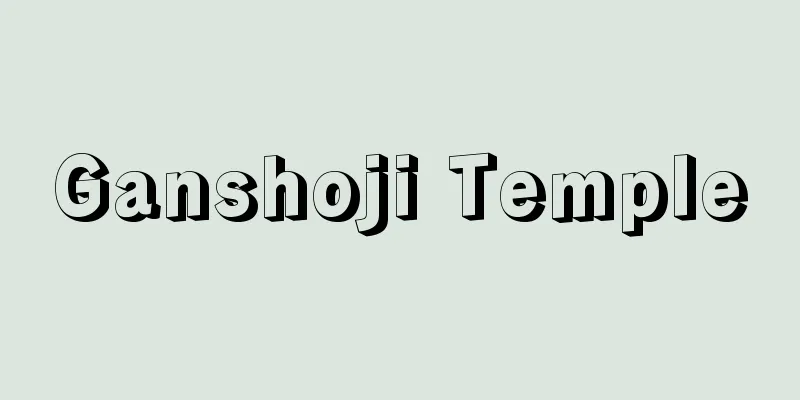Formal attire - Reiso

|
This refers to formal attire for attending ceremonies such as weddings and funerals. [Hiroko Ota] Japanese clothingThe essence of formal attire is to respect the ceremony and express respect. The form and customs of formal attire have changed with the times. For example, formal attire for women changed significantly during the Meiji, Taisho, and Showa periods. For example, while in the Meiji period, formal attire for women was three-layered, in the Taisho period it changed to two-layered, and in the Showa period after World War II, most formal attire was white habutae with attached hiyoku (separate fabric attached to the cuffs, collar, and hem, as if wearing underwear under layers). In addition, obi and obi-jime (belts) were formally round obi and white round kimono, but in recent years, fukuro obi and gold or silver flat obi-jime are often used. However, formal attire still has many detailed rules, so it is necessary to be fully aware of where and for what purpose it is worn. Formal attire differs depending on whether it is a celebration or condolence, and ranges from public to private, and the formal attire itself is not uniform. Depending on the importance and content of the event, formal attire, semi-formal attire, and informal attire are used. [Hiroko Ota] In case of celebrationMen's formal wearThis is called monfuku, and is worn by grooms and matchmakers at weddings, and when attending formal events. It is a long kimono and haori with five black crests, and Sendaihira hakama. This style has been popular since the early Meiji period, regardless of whether one is young or old. [Hiroko Ota] Men's semi-formal and casual attireA combination of black habutae with five crests, plain omeshi or tsumugi kimono, and dark plain tsumugi hakama will be close to formal attire. A plain omeshi or tsumugi haori with three crests or one crest sewn on it can be worn with a matching kimono, or a plain or nearly plain striped or patterned kimono, and plain hakama made of Hakata Kenjo or tsumugi. Even when wearing casual attire, hakama should always be worn, and the kimono should not be worn loosely. [Hiroko Ota] Women's formal wearThe most formal attire is the dyed five-crested kimono. Married people wear tomesode, and unmarried people wear furisode. Tomesode, also called Edo-zuma, are made of a single-stranded crepe and have a pattern of eba dyed from the collar down to the hem. Those with a black background are called kuro-tomesode, and are the first formal attire for married women. They are worn by the matchmaker, mother, and close relatives at weddings. Those with a background color other than black are called iro-tomesode, but they can be considered to be of the same rank as kuro-tomesode. They are also worn when invited to wedding receptions and at official events. They are also suitable for older unmarried people. Furisode are made of fabrics with a pattern, such as single-stranded crepe, monrinzu, and donsu. They are the most luxurious of the long kimonos, and are divided into o-furisode, chu-furisode, and ko-furisode depending on the sleeve length. Nowadays, o-furisode are mainly used as bridal attire, and chu-furisode are mainstream. They are worn at weddings, wedding receptions, coming-of-age ceremonies, thank-you parties, and other formal occasions. [Hiroko Ota] Women's semi-formal and casual attireThere are various types of kimono, including plain-colored kimono, Homongi, and Tsukesage, and they can be worn by both married and unmarried people. Plain-colored kimono with three or one crest can be worn for a wide range of occasions, such as weddings, wedding receptions, children's entrance and graduation ceremonies, celebrations, and tea ceremonies, as modest attire that is less formal than formal attire. The obi sash you choose can be chosen to suit the occasion. Homongi are often used as casual attire, and crests are rarely used. There are various patterns and a wide range of colors. There is a wide range, from formal ones similar to iro-tomesode to more fashionable ones, so it is best to choose one that suits your purpose. Tsukesage is more informal than Homongi. [Hiroko Ota] In case of funeralMen's formal attire, semi-formal attire, casual attireOther than changing the color of the half-collar and haori cord to gray, it is the same as for celebrations. [Hiroko Ota] Women's formal wearIt is a plain black mourning outfit with five dyed crests, and can be worn by both married and unmarried people. In the Kanto region, it is generally made of habutae fabric, while in the Kansai region, it is made of crepe fabric, and the general rule is that the fabric has no patterns. It is worn for funerals of close relatives and for memorial services from the seventh day to the third anniversary of a person's death. [Hiroko Ota] Women's semi-formal and casual attireColored mourning clothes with three or one crest are worn for wakes, funerals, memorial services, etc. Modest, subdued colors such as wisteria, gray, navy blue, azuki bean, and dark green are used. It is formal to have no ground pattern, but as long as it is not an auspicious pattern, there is no problem. Patterns suitable for both happy and sad occasions include wood grain, running water, vertical waves, waves, and sayagata. A black crested haori is worn over a long kimono of a plain color, or a komon or omeshi kimono that is close to a plain color. It is more informal than colored mourning clothes. If a man is accompanying the woman, whether the man is wearing Japanese or Western clothing, the woman should wear clothing of the same rank as the man. [Hiroko Ota] Western clothingIn Western clothing, formal attire and accessories worn on formal occasions such as weddings, funerals, etc. are generally considered formal wear and are distinguished from everyday wear. Originally, formal attire was formal attire for official ceremonies and festivals, and included court dress (grand attire, semi-formal attire) worn at the Imperial Court, ceremonial attire worn at religious events such as worship services, military ceremonial attire, and student uniforms, all of which are called ceremonial dress. Ceremonial attire is full dress and is often determined by gender, age, occupation, rank, religion, etc., but the style has been passed down to the present day from the attire worn by the court nobles during the Louis Dynasty from the 17th to 18th centuries. For women, there is the manteau de cour as grand court attire, the robe décolleté as grand court attire (sub-formal attire for the evening at the Imperial Court), and the robe montante (daytime), while for men, there is the grand court attire, frock coat, and morning coat for daytime, and the grand court attire as well as swallowtail coats and tuxedos for nighttime. Today, the manteau de cour is only worn for special religious ceremonies, while the robe décolleté is worn as general formal evening dress, and the robe montant is worn as the basic form of afternoon dress. General formal attire is worn for private ceremonies such as weddings, funerals, and various parties. There are standards for formal attire, informal attire, and semi-formal attire. These standards have undergone many changes due to the influence of the times, but they are likely to become increasingly simplified in the future. Since the Meiji period, Japanese and Western formal attire have been worn together in Japan, but there is a fundamental difference between the two. In other words, Japanese attire is primarily worn according to the purpose of the ceremony, while Western attire is worn according to the time of the ceremony. For example, Japanese furisode and tomesode can be worn both during the day and at night, but Western attire needs to be differentiated into afternoon dresses, dinner dresses, and evening dresses, depending on whether the time is day or night, even for the same wedding reception. Incidentally, today's fashionable informal dresses for women and dark suits and cocktail suits for men are semi-formal attire that can be worn both day and night. The important thing about formal attire is to be aware of the appropriate TPO (time, place, occasion) and to know the standards of appropriate attire, while also simplifying it to suit modern life. Today, everyday clothing has become more casual and fashionable with the modernization of life, but formal wear has also become more simplified and diverse due to the influence of the times. Not only have there been changes in clothing styles such as sleeveless dresses and short evening dresses, but semi-formal wear such as cocktail dresses and fancy tuxedos have become more common due to changes in lifestyle. Reflecting the latest trends, rational designs have also appeared, incorporating women's pantaloons and pants styles, layered looks, and coordinated looks. [Hirano Yuko] [Reference] |©Shogakukan "> Men's formal attire (Japanese style) ©Shogakukan "> Women's formal attire (Japanese style) ©Shogakukan "> Men's formal attire (Western style) ©Shogakukan "> Women's formal attire (Western style) Source: Shogakukan Encyclopedia Nipponica About Encyclopedia Nipponica Information | Legend |
|
冠婚葬祭など、儀式に出席するための正式な服装をいう。 [太田博子] 和装礼装の本質は儀式を尊重し、敬意を表現することにある。礼装の形やしきたりは時代とともに変わってきた。明治、大正、昭和になってからも、礼装は大きく変化している。たとえば、明治には三枚襲(がさね)だった女性の礼装も、大正には二枚襲となり、昭和も第二次世界大戦後になると、ほとんどが白羽二重(はぶたえ)の付比翼(つけひよく)(袖口(そでぐち)、振り、衿(えり)の部分と、立褄(たてづま)、裾(すそ)回りに、下着を重ねて着ているように別布をつける)になっている。また、帯や帯締も、正式には丸帯、白丸絎(ぐ)けであったものが、最近は袋帯に金や銀の平打(ひらうち)帯締を多く用いている。しかし礼装には、まだ細かい約束ごとが多いので、どこで、何の目的で着るかを十分心得て着用する必要がある。礼装は、慶弔で異なり、公的なものから私的なものまでさまざまで、礼装そのものも一様でない。行事の軽重や内容に応じて、礼装、準礼装、略装を使い分ける。 [太田博子] 慶事の場合男子礼装紋服といわれるもので、結婚式での新郎、仲人(なこうど)や、公式行事など格式ある場所に出席するときに着用する。黒羽二重染抜五つ紋付の長着と羽織に、仙台平(せんだいひら)の馬乗袴(ばかま)を着る。これは若者、年輩者に関係なく、明治初期から定着した。 [太田博子] 男子準礼装・略装羽織は黒羽二重染抜五つ紋付、長着は無地お召や紬(つむぎ)、袴は濃い無地の紬という組合せにすると、礼装に近いものになる。無地のお召や紬の三つ紋、一つ紋の縫い紋をつけた羽織に、対(つい)の長着、または無地か無地に近い縞(しま)や紋織の長着をあわせ、博多(はかた)献上、紬の無地の袴を着してもよい。略装の場合でも袴はかならずつけ、着流しにはしない。 [太田博子] 女子礼装もっとも格式ある装いは、染抜五つ紋付である。既婚者は留袖、未婚者は振袖を着用する。留袖は江戸褄(づま)ともいわれ、一越縮緬無垢(ひとこしちりめんむく)仕立てで、衿から下の裾に絵羽(えば)模様を染めたもの。黒地のものは黒留袖といい、既婚女性の第一礼装である。婚礼のときに仲人、母親、近親者が着用する。地色を黒以外の色に染めたものを色留袖というが、黒留袖と同格と考えてよい。披露宴に招かれたときや、公式行事などにも用いる。年齢の高い未婚者などにもふさわしい。振袖は一越縮緬や紋綸子(もんりんず)、緞子(どんす)など、地紋のある生地(きじ)を用いる。長着のなかでもっとも豪華なもので、袖丈により大振袖、中振袖、小振袖に分けられる。現在、大振袖は主として花嫁衣装に用いられ、主流は中振袖が占めている。結婚式や披露宴、成人式、謝恩会などの式典や改まった席で着用する。 [太田博子] 女子準礼装・略装色無地、訪問着、付け下げなどで、未婚・既婚の別はない。三つ紋、一つ紋をつけた色無地は、結婚式や披露宴、子供の入学式や卒業式、祝賀会、茶会など、礼装ほど儀式ばらない控え目な装いとして、範囲広く着られるものである。帯の取り合わせで、その場にふさわしい格が出せる。訪問着は略装として多く用いられるもので、紋はほとんどつけない。模様の置き方はさまざまで、色彩も豊富。色留袖に近い格のあるものから、おしゃれ着的なものまで範囲が広いので、目的にあったものを選ぶとよい。付け下げは訪問着に比べ、より略式になる。 [太田博子] 弔事の場合男子礼装・準礼装・略装半衿、羽織紐(ひも)をねずみ色にかえるほかは、慶時のときに同じである。 [太田博子] 女子礼装染抜五つ紋付の黒無地喪服で、未婚・既婚の別はない。一般に関東では羽二重、関西では縮緬を用い、地紋のない生地が原則である。肉親や近親者の葬儀、初七日から三回忌までの法事に着用する。 [太田博子] 女子準礼装・略装三つ紋か一つ紋付の色喪服は、通夜、告別式、法要などに着用する。藤(ふじ)色、ねずみ色、紺、小豆(あずき)色、濃緑などの控え目で、落ち着いた色のものを用いる。地紋のないのが正式だが、吉祥紋様でなければ差し支えない。慶弔どちらにも適するものとして木目、流水、立涌(たてわく)、波、紗綾(さや)形などがある。黒紋付の羽織は、じみな色の無地、または無地に近い小紋やお召の長着の上に羽織る。色喪服より略式になる。なお男性同伴者があるときは、男性が和洋服いずれの場合でも、女性は男性の服装と同格のものを着用する。 [太田博子] 洋装洋装では、一般に冠婚葬祭などの改まった席で着用する礼服およびその服飾品を、フォーマルウエアformal wearとして日常着と区別している。 本来、礼服は公的な儀式や祭典などの儀礼用の正装で、宮中で着用されるコート・ドレス(大礼服、中礼服)や、礼拝式などの宗教的行事に着る式服、軍人の儀礼服や学生の制服などをさし、セレモニアル・ドレスとよばれている。礼装は、正装(フル・ドレス)にあたり、性別、年齢、職種、階級、宗教などに規定されることが多いが、形のうえでは17世紀から18世紀にわたるルイ王朝時代の宮廷貴族の服装が、今日まで引き継がれている。婦人では宮中大礼服としてのマントー・ド・クール、大礼服のローブ・デコルテ(宮中では夜の中礼服)やローブ・モンタント(昼)があり、男子では昼間は大礼服、フロック・コート、モーニングコート、夜間では大礼服のほか燕尾(えんび)服、タキシードなどがある。マントー・ド・クールは今日では特別な宗教的儀式にしか着用されないが、ローブ・デコルテはイブニング・ドレスとして一般の正礼装に、ローブ・モンタントはアフタヌーン・ドレスの基本形として着用されている。 一般の礼装は、冠婚葬祭や各種パーティーなどの私的な儀式に着用する正装にあたり、正礼装(フォーマル)、略礼装(インフォーマル)、準礼装(セミフォーマル)といった装いの基準がある。これらの基準は、時代の影響を受けて多くの変遷を経てきたが、今後もますます簡略化される傾向にある。明治以来、日本の礼装は、和洋の礼服が渾然(こんぜん)と着用されているが、両者には根本的な違いがある。つまり、和装は主として儀式の目的によって着分けられるが、洋装では儀式の時間によって着分けられる。たとえば和服の振袖(ふりそで)や留袖は、昼間でも夜間でも着ることができるが、洋装では同じ披露宴でも、その時間が昼か夜かによって、アフタヌーン・ドレス、ディナー・ドレス、イブニング・ドレスという区別が必要となる。ちなみに、今日流行の女子のインフォーマル・ドレス、男子のダークスーツやカクテルスーツは昼夜兼用の略礼装。礼装についてたいせつなのは、着用のTPO(時、所、場合)を心得て、その約束事である装いの基準を知ったうえで、現代の生活にあわせて簡略化することである。 今日、日常の衣服は生活の近代化とともにますます軽快なものになり、流行も多様になっているが、時代の影響を受けて、礼服もますます簡略化、多様化してきている。袖なしのドレス、ショート・イブニング・ドレスといった服型の変化ばかりではなく、生活方式の変化から、カクテル・ドレスやファンシー・タキシードのような準礼装が多くなった。流行を反映して、女子のパンタロンやパンツ・スタイル、あるいはレイヤード・ルックやコーディネート・ルックなどを取り入れた合理的なデザインも登場している。 [平野裕子] [参照項目] |©Shogakukan"> 男性の礼装(和式) ©Shogakukan"> 女性の礼装(和式) ©Shogakukan"> 男性の礼装(洋式) ©Shogakukan"> 女性の礼装(洋式) 出典 小学館 日本大百科全書(ニッポニカ)日本大百科全書(ニッポニカ)について 情報 | 凡例 |
>>: Reisenji Temple [Hot Spring] - Reisenji
Recommend
Rhapis humilis (English spelling) Rhapishumilis
…[Ichiro Sakanashi]. … *Some of the terminology t...
A star of a thousand ryo
The term originally came from Kabuki, but is now ...
Visconti, Ludovico (English spelling) ViscontiLudovico
...The Baroque was a revival of the Baroque style...
Uruk Culture
A culture from the late 5th millennium BC to the m...
resting potential
…The ability of a neuron to conduct excitation is...
Emperor Yang
The second emperor of the Sui dynasty (reigned 60...
Toin family
The Northern Fujiwara clan, the first branch of th...
Foreign official - Gekan
One of the classifications of government position...
Sea kettle - Kaifu
A small depression in the seabed that is circular,...
Print - Hanpon
It is also written as "banbon". It is th...
Tragopan satyra (English spelling)
…[Ryozo Kakizawa]. … *Some of the terminology exp...
Aletsch
…The central part of the Swiss Alps is called the...
Echigo Nagano [Hot Springs] - Echigo Nagano
...The mountain valleys around Kasahori Dam are t...
Fujiwara no Tanetsugu - Fujiwara no Tanetsugu
A politician from the late Nara period to the ear...
Shelekhov, GI (English spelling) ShelekhovGI
…Russian fur trader and explorer. Also written as...


![Garonne [river] - Garonne](/upload/images/67cb45a5b6a06.webp)






